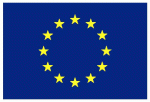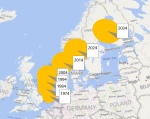To date, Canback has worked with 20 health and beauty companies, in categories that range from parasite-resistant foods to grooming products. These projects have developed Canback’s health and beauty insights across 5 continents and 53 countries
-

We have expanded geographically at a rapid pace
EIU Canback is an elite management consulting and related services firm anchored in management science, predictive analytics, and consumer market knowledge. We work globally with the world’s largest companies as clients. This has taken us to 80 countries since our founding in 2004.

This EIU Canback special report explains how Asia’s consumer landscape will evolve over the coming decade and how companies can capture growth by leveraging analytics to anticipate turning points such as ‘take-off’ or plateau points in the life cycle of a product category. (more…)
While we take a sharply analytical approach to quantify market opportunities for today and tomorrow, this alone is not sufficient to provide our clients with a comprehensive view of what is happening in those markets.
Canback consultants have therefore walked the ground in nearly 80 countries over the past ten years, in order to complement our quantitative expertise with an intimate understanding of the markets we visit.

Most large U.S. fast-moving consumer goods companies find it difficult, if not impossible, to grow at the rate of the economy. One part of the solution is to premiumize and to move to a more organic or sustainable brand portfolio.
We thus constructed the “Whole Foods Test” to see if this is happening. Arguably, Whole Foods’ assortment shows where the FMCG market is heading, especially in food and beverage. What today is the territory for primarily higher income and better educated consumers, is tomorrow’s mainstream norm. (more…)
Before any Olympic Game, the media revel in doomsday prophecies that never materialize. Today, the day before the opening of the Rio games, we did a fact-based analysis of whether these Olympics will be troubled. We conclude they will be a success.
Cities, not countries, organize Olympic Games. We thus quantified the cities’ hosting ability from 1948 till 2016. Rio is at the lower end of the spectrum, but not glaringly so. (more…)
As part of a large research project to understand where leading edge cities are found in the U.S., we started with the more modest goal of finding buzz (sought after, wanted) cities.
We find that tourist destinations have the highest buzz factor, topped by Daytona Beach. Hipster cities also score high, like Portland, Oregon, Austin, Texas, and Madison, Wisconsin. At the bottom is Worcester, Massachusetts. (more…)

A decade ago, we published a monthly U.S. recession predictor based on the Fed’s term spread model. It correctly predicted a recession starting in late 2007.
We are now reviving the predictor. There is currently no sign of a coming recession. We’ll update it monthly. (more…)

This document gives an overview of the methods and credentials we have in the telecom sector. It demonstrates our global reach and the fact-based we take in telecom by leveraging predictive analytics.

When making cross-border capital allocation decisions, exchange rate movements can trip up good investments. Is it possible to predict currency movements? We give a cautious yes when the time horizon is 3-10 years, i.e. a strategic outlook (as opposed to currency traders’ horizon of seconds to at most months). (more…)

There is much talk about the growth of the middle class globally. But few people know where it lives. We may believe it is large in China, but how large? We put together a simple country comparison using C-GIDD data. (more…)

The VRIO concept was introduced by Jay Barney in 1991. It is now the cornerstone of corporate strategy development. We apply it in our strategy work, and it is also the foundation for how we think about adding value to clients.
A resource like management consultants has to be valuable, rare, inimitable, and organized. (more…)

The highest quality food in the world is by any objective measure French, and the ultimate arbiter of fine dining is Guide Michelin.
We used the guide’s global restaurant ranking for 2016 to statistically analyze which countries have the highest love of food and what drives gourmet dining. Belgium ranks first, Poland last, among the 25 countries. (more…)

Developing a strategy that creates a sustainable competitive advantage is a vexing task. Our approach combines the two dominant strands within strategic thinking: Structure-Conduct-Performance and the Resource-Based View. Our projects aim to build strategies that are VRIO–a central concept in modern strategy development theory.

Here is advice for current and future business analysts at large corporations or consulting firms.
Your most important goal should be to add value. This means thinking long and hard about whether you copy, tabulate or analyze information. Only analysis truly adds value. (more…)

The global luxury goods market has enjoyed spectacular growth over the past 30 years. We predict this will continue based on an analysis of luxury goods retail stores. We mapped Burberry, Chanel, Gucci, Hermes, Louis Vuitton, Prada, and Apple stores around the world by city. In total 2,176 luxury good / high fashion stores. (more…)

Highly profitable companies earning a very high return on capital should be viewed with skepticism. Why? Because they may not be maximizing shareholder value as they defend a high P/E ratio, and not capturing good, but lower P/E opportunities. Maximizing profitability is not the same as maximizing shareholder value. (more…)

We encounter statistical analysis errors all the time. Here are the most common ones we come across when reviewing third party reports, other consulting firms’ deliverables, market researchers, etc. (more…)

We took a look at which components of the global gross domestic product (sum of country GDP) have grown the fastest over the past 40 years. (more…)

Do recent foreign exchange gyrations spell the end of the world as we know it? Or are they just business as usual? We took a look using our FX Tool. For most countries the changes are normal, but the Eurozone, the U.S., India, Pakistan, Colombia, Russia, Ukraine, and many smaller countries now experience once in a generation gyrations. (more…)

How quickly should a category or brand grow to avoid standing still? It depends on how fast the relevant part of the population is growing. We updated (May 2015) our popular analysis and it now covers 2015-2025. India, Bangladesh, Viet Nam, Pakistan, Indonesia are the top 5 countries. (more…)

Making diversification decisions–be it brand extensions, introducing new products, or entering new geographic markets–is hard for large companies. Few new initiatives seem to add significant value compared to what already exists. Yet companies fade without renewal. (more…)

We have updated our short video showing our project locations and where we travel to. It shows why we call ourselves the world’s smallest global company. (go to video…)

C.K. Prahalad’s book, The Fortune at the Bottom of the Pyramid, argued that poor people constitute a large market opportunity for global companies. We have always been uncomfortable with the idea, and decided to examine Prahalad’s numbers. (more…)

Analysts often include too many independent variables in their models to improve model quality and find statistical patterns. We demonstrate how this sometimes leads to inaccurate findings. (more…)

Linear regression is the most popular method to forecast demand, but it does not always give the best results. Using an example from the fast-moving consumer goods industry, we introduce what are often better alternatives and discuss how to measure predictive accuracy (and no, it is not R²). (more…)

Many executives look for a high R² to assess the quality of a regression analysis, but this is often a mistake. One common example that illustrates why, is the relationship between the stock market and GDP. Regressing the S&P 500 index against GDP, we get an R² of 0.99. (more…)

We developed an interactive chart to show how total alcohol consumption per capita and the main categories beer, spirits and wine have shifted over the past 40 years. It uses publicly available data from the WHO with some adjustments by us (notably China). (more…)

There are a wide variety of consumption patterns for fast-moving consumer goods around the world. What explains the differences in consumption levels among countries? And what are the implications for global businesses as they consider investing in different markets? (more…)
Around 1/3 of our work is M&A operational due diligence. It leverages predictive analytics, but goes much farther including commercial strategy development, functional skills assessments, and financial modeling. (more…)

See our video with the GDP of the world’s major cities in 2014. Bubble area is proportional to GDP. (go to video…)

Well, not Esperanto. If you want to be successful in international trade, which languages should you speak? One answer is, the languages of those doing the trading. (more…)

We took a long term look — years 1-2034 — at global income equality using the C-GIDD dataset. In line with other research, we found that inequality was more or less flat before the industrial revolution, rose sharply from around 1800 till 1980 and then started to decline, and is projected to decline further. (more…)

Data from C-GIDD have been purchased by companies from a wide range of industries since the database launched in 2008. Here are some of our repeat customers. (more…)

The television series “Upstairs Downstairs” was wildly popular in the 1970s. It depicts lives of the upper and lower classes in London around 1920. We took the concept and quantified where Upstairs and Downstairs people live today. Data are from C-GIDD. (more…)

Staffan’s long and deep experience in Africa was a foundation for this article by Nick Kusitch: Africans Open Fuller Wallets to the Future. It was the eighth most read article in yesterday’s NYT, showing how interested people are in African matters.

This seminal presentation by Staffan Canback is still valid, 23 years after it was created. It discusses basic managerial principles in an age of change, building on Winnie-the-Pooh, Alice in Wonderland, Henri Fayol, and of course Ronald Coase and chaos theory. (more…)

Country growth prospects change over time. We took a look at which countries today have higher or lower growth expectations compared to two years ago. (more…)

Since it’s publication in 1998, Staffan Canback’s article “The Logic of Management Consulting” has become the most cited academic paper about the industry. It discusses how management consulting should be defined, why it exists, its history, and where it may be heading. (more…)

Over the years, companies and managers have come to rely more and more on the Canback Global Income Distribution Database (C-GIDD). C-GIDD’s uniqueness lies in the quality and completeness of our GDP and income distribution data, which covers 212 countries, 694 subdivisions (states, provinces, etc.) and 997 major cities from 2000 till 2025. (more…)
Quantifying market opportunities requires clear definitions. The Affordable – Available – Actual market sizing method provides this. It is a logical why to understand not only current market size, but also the latent market. (more…)
We have maintained strong partnerships with many of the largest food and beverage companies in the world, with the success of initial projects leading to ongoing, impactful collaborations. Here is an overview of our capabilities.
(more…)
Fortification is the practice of deliberately increasing the content of an essential micronutrient, such as vitamins and minerals in food and beverages. We took a look at the price premiums associated with fortification after eliminating other effects such as branding, pack size and geography.
We find that fortified foods command a 11% price premium over non-fortified equivalents, but with wide variability. (more…)
Our managing director wrote the article The Logic of Management of Management Consulting in 1998. It has since become the most widely used course material on the profession at universities world wide. We have now summarized it on 4 pages and updated it till 2015. It explains what management consultants do, why they exist, and how they add value.
It is a useful read for executives requiring consulting advice and for students interested in a consulting career. (more…)

Our managing director Staffan Canback was recently interviewed on Business Day TV, the leading South African business channel. He commented on recessions in the US and South Africa, outlook for African countries, and other topics (8 minutes). (go to video…)
Staffan Canback, our managing director, and Arshad Abba, head of Africa, were interviewed by South Africa’s leading business magazine recently. They shared their thoughts on Africa, management consulting, and other topics. (more…)
The best measure of company size is its value added (VA) because this reflects what the company does internally. VA is the sum of labor cost and capital cost including taxes. The ranking based on VA differs significantly from the Fortune 500 which uses revenue.
Based on VA, here is the Canback 50. Walmart tops the ranking, as it does in the Fortune 500, and Apple takes 2nd place (up from 3rd). Berkshire Hathaway is 3rd (up from 4th). ExxonMobil drops from 2nd to 29th. (more…)
Our most famous project is “Cheese in China”. In 2005-06, we were commissioned to create a 20 year prediction for where the market was heading. At the time, the Chinese hardly ate any cheese. We predicted it would be the second largest market in the world by 2025.
Today we are half-way there. We predicted 32% annual growth (far above any other observer). Actual growth is 32%.
Why this remarkable success? Because we look at predictions as a strategic exercise, not a statistical modelling exercise. Never commission a consulting firm to model the future. Commission them to understand the future (supported by a model). (more…)
Clients admire our use of predictive analytics. It gives them a strong and practical foundation for decision making. What were once unstructured ideas and opinions, become clear decision points with buy-in from their organizations. (more…)

Where do billionaires live, and why? We took the Forbes list for 2015 and analyzed it statistically. Hong Kong and Sweden have by far the highest billionaire densities. (more…)

With the the never-ending stream of alarming news about the world economy, it is difficult to form an opinion about what is really going on. This post takes a dispassionate look at 2016–a “nowcast.”
We find that 2016 is a normal year compared to the past forty years. Outperformers: Emerging countries and Asia. (more…)

Setting prices in various countries that also make sense globally is a difficult tasks. The same product–be it a soft drink or a consulting project–sold in the United States and in South Africa should not carry the same price. How should companies determine the price difference? (more…)

The explosive growth of craft beer is one of the most interesting phenomena in U.S. consumer markets over the past 20 years. It is an almost perfect illustration of the J-curve concept.
We took a look at the characteristics of craft beer demand and found that affluence, importance of the services sector, and size of student population are the key factors driving craft beer penetration. New York is the leading craft beer market. (more…)
The UN Climate Change Conference in Paris set the goal of limiting global warming to 2 °C, by lowering CO₂ emissions. Using the elasticity concept from economics we shed light on how much countries can feasibly lower the emissions.
We find that global emissions may be reduced by almost 60%. China, the US, Russia and India together contribute 71% of the global reduction. North Korea has the largest relative reduction opportunity: 91%. (more…)

We recently quantified how global 12 well-known consumer-facing companies are: Apple, Coca-Cola, Diageo, Electrolux, l’Oréal, LVMH, McDonald’s, Nestlé, Nike, Procter & Gamble, Toyota and Vodafone. Diageo is the most global of these companies. There is still plenty of room for high growth, be it organic or through acquisitions. (more…)

We analyzed the personal popularity of the 20 main party U.S. presidential candidates from 1960 till 2012. Reagan was the most popular, followed by Nixon and Ford. The least popular candidates were McGovern, Mondale, and Dukakis. (more…)

As part of our own globalization effort, we analyzed McKinsey’s geographic footprint. We found the analyses interesting so we share them broadly. Technically, they also show the usefulness of probit regression and the power of non-obvious data sources. (more…)

We are excited to introduce Market Explorer, a joint development between the EIU and Canback. It is a new online tool that allows immediate insight into market opportunities worldwide. With detailed coverage of over 90 countries and 200 cities, forecasting through 2030, and application of over 1,600 data points per city, the intuitive tool provides an unmatched expertise of economic modeling and a reliable analysis of where growth can be found. (go to video…)

We have quantified recessions around the world from 1991 till 2015. On average, close to 20% of the world’s population are in recession in any year, but with large variation. Our interactive graph and video show show where and when. (more…)

In our work for cellular operators, COAT is the underpinning for our analysis of performance. It applies structural equation modelling to a dataset of 36 countries / 62 operators over several years. Drivers of profit and growth, among other things, are quantified using this statistical technique.
(more…)

The Economist famously publishes the Big Mac index to illustrate purchasing power. Their dataset can also be used to reverse-engineer McDonald’s pricing strategy. Our example demonstrates the usefulness of the Canback Global Price Calculator. (more…)

We look at the provincial GDP growth rates in China. The redder (hotter), the higher growth; the bluer (colder) the lower growth. Growth is relative to the provincial median growth of 9.1% p.a. for the entire period (so in a given year, all provinces can be red or blue). Note that deep blue would still be solid growth in any other country. (go to video…)

We are delighted to report that The Economist Group, through the EIU, has acquired Canback & Company effective July 15, 2015. We will operate as a largely independent unit called EIU Canback. (more…)

The cost-of-capital concept is a cornerstone of corporate finance. Here we take a different view: What is the cost to society for managing its capital? We look at the U.S. and find that the cost is surprisingly high compared to the capital return: around 25 cents for each dollar returned. The analysis explains parts of the financial crisis and the pressure on the financial sector since. (more…)

As the United Kingdom struggles with its relationship with the EU, many of us struggle with understanding what is the EU. Here we give a simplified definition of the Single Market and the European Union’s role within it. We also present some metrics. (more…)

The final step in understanding country risk is to put the three risk measures (economic, currency, and inflationary) together. The composite ranking shows that the United States has the lowest risk and Timor-Leste the highest. (more…)

The third, and final, risk is inflation. We view inflation as less important to companies because it does not have a direct impact on demand (except when extreme). But it makes pricing difficult and changes consumer behavior. Germany has the best performance, Turkey the worst. (more…)

We quantify currency risk by measuring the standard deviation of exchange rate changes. The Tunisian dinar and the U.S. dollar carries the lowest risk; the Congolese franc the highest. Currency risk is at the same level as economic growth risk and should be carefully considered when making investments outside the home country. (more…)

When making investments in various countries, country risk is always a concern. How should such risk be measured? We suggest that the best metric is the standard deviation of GDP growth. With our metric, Australia has the lowest country risk, and Timor-Leste the highest. (more…)

J-curves explain how consumer preferences change over time. They tell the story of how, initially, reduced cost and standardization create markets. Ultimately, this leads to homogeneous and bland products. At this point, consumers start demanding choice and quality–premiumization begins. (more…)

This article by Staffan Canback and Frank D’Agnese describes how global markets can be analyzed using income distribution data. It leverages the Golder-Tellis model for demand predictions. It also discusses how macro and micro data can be combined in marketing. (more…)

We took a look at where the “optimal” global and regional corporate headquarters should be located if a company wants to be truly global. (more…)

Making predictions statistically usually requires different methods than explaining the past. (more…)
In 1959, Prof. Joe Bain published the Structure-Conduct-Performance (SCP) framework. Since then it has become a standard analytical tool for understanding industry and market behavior. Here’s a look at the Canback adaptation, used extensively in our work. (more…)

Canback & Company is revolutionizing the management consulting space because of our commitment to continually innovate. To be truly revolutionary requires us to not only be on the cutting edge of analytical methods but includes all aspects of being a global consultant. One area in particular that we feel we are head and shoulders above the competition is our philosophy on travel. (more…)

This video shows global centers of gravity for population, GDP, socioeconomic classes, and international trade over time (1974-2034). It uses data from C-GIDD. (go to video…)
This 2-pager by Staffan Canback is the third most downloaded paper on SSRN’s M&A Practice download list. (more…)


